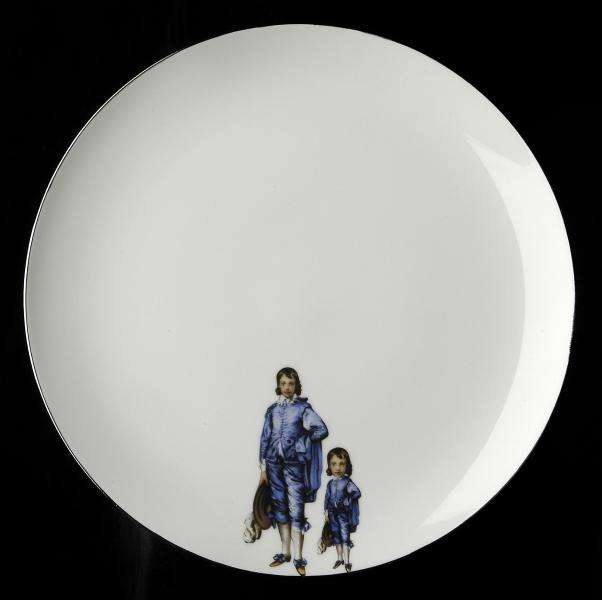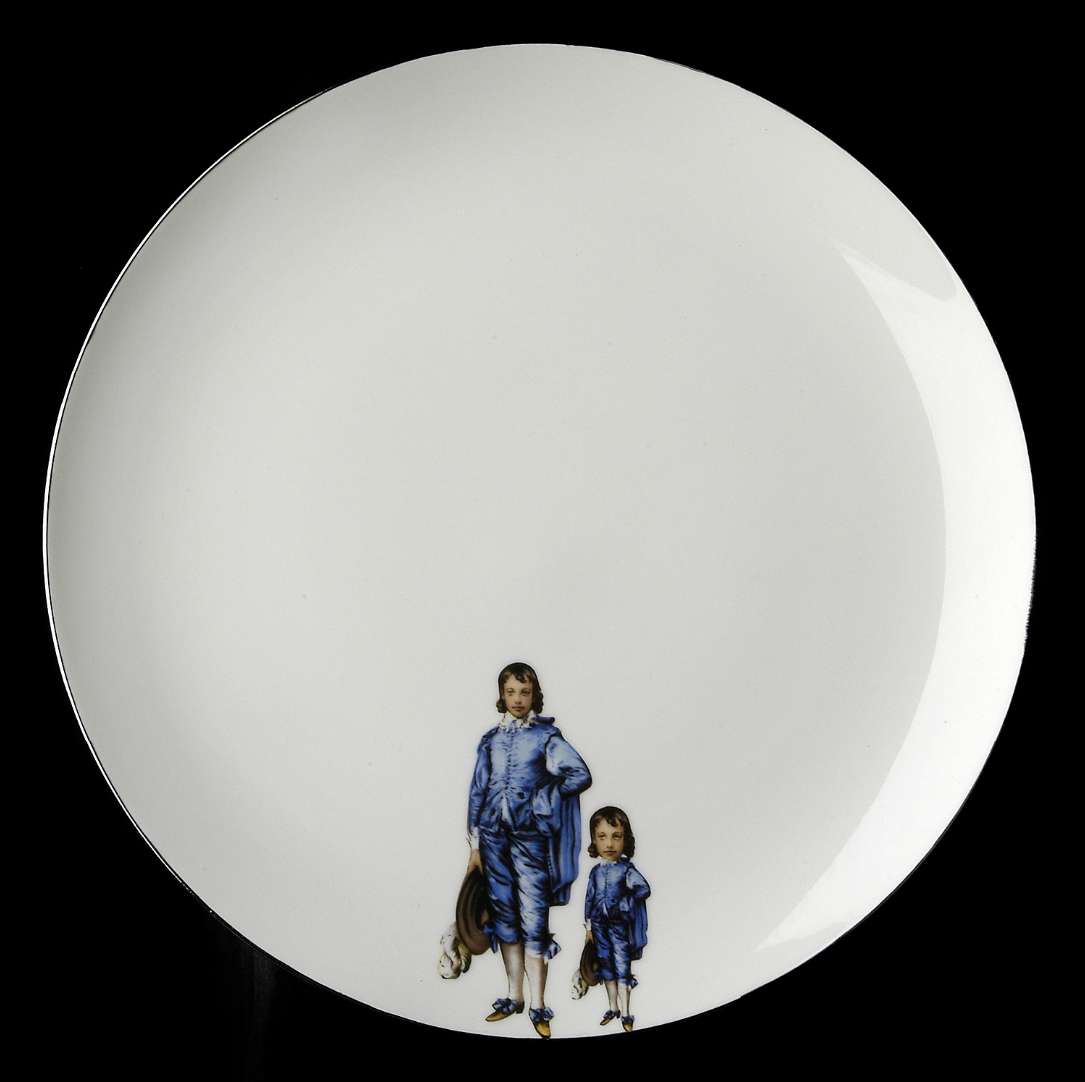Like Father, Like Son from the Blue Boy Set, 1969, porcelain, silver, and applied decals, Smithsonian American Art Museum, Gift of the Howard Kottler Testamentary Trust, 1991.

Hi! My name is Alyson, and I’m this year’s Getty Marrow Intern at AMOCA. I recently graduated from Chapman University with a BA in Art History and a minor in Anthropology.
Howard Kottler (1930-1989) was a ceramic artist and professor well known in the ceramic community for his masterful use of decals, which he manipulated and adhered onto store-bought porcelain plates. Born in Cleveland, Ohio, in 1930, Kottler attended the University of Ohio, where he received a B.A. in biological science and M.A. in ceramics before attending Cranbrook University to further his ceramic expertise. In 1964, Kottler began teaching ceramic at the University of Washington, where he remained until his death in 1989.
Before becoming a professor, Kottler had moved to California, where he was introduced to the California funk movement, which was more creative and experimental than the more traditional ceramics programs he had been involved in. Reflecting back on the culture of the 1960s, Kottler recounted in a 1980 interview:
“There was a dramatic surge in the Bay Area into funk art, which manifested itself in ceramics through the use of bright colors, erotic images, narrative, and the use of mixed media… It was a direction that worked perfectly for me, and gave me the freedom to let my craziness run amok.”
Howard Kottler
Somewhere between production potter and graphic designer, Kottler began adhering commercially produced decals to mass-produced porcelain plates. The decals, which included the U.S. Capitol Building, various guns, a Pope, Thomas Gainsborough’s Blue Boy (1770), and Grant Wood’s American Gothic (1930), were manipulated, multiplied, and scaled to various sizes. His plate series, amounting to around 60 plates completed over 20 years, are revered for their high quality. Past retrospectives of his work have repeated this sentiment, adding commentary on the artist’s sardonic and political messages, but neglect to outwardly mention that Kottler was gay.
More well known series, such as the Blue Boy set from 1969, and American Gothic set from 1972, were most likely informed by Kottler’s personal identity as a gay man, and his love for breaking social norms and exercising his wit. In one plate, titled Look Alikes from 1972, Kottler altered the American Gothic painting to appear as a portrait of two men. In the Blue Boy set, titles such as Manhandler, Like Father, Like Son, and Would Blue Boy, supply double entendres to pair with the visual- manipulations of the Blue Boy. It is also interesting to note that Blueboy Magazine came out in 1974 as one of the first gay lifestyle magazines in the U.S, five years after Kottler’s set.
As first an art history student, and then a curatorial intern researching artists, I have repeatedly seen the identities of artists disregarded when they did not align with the era’s socially accepted norms. As a curatorial intern, I have had a direct voice in choosing artists for exhibitions. Now having had this (small) position of power, I am reminded of how important it is to include artists’ full identities and biographies in museum and artistic narratives. For years, Kottler’s identity had been partially hidden, the reason isn’t entirely clear why, but it felt like a loss considering that his identity did inform some of his most well known works.
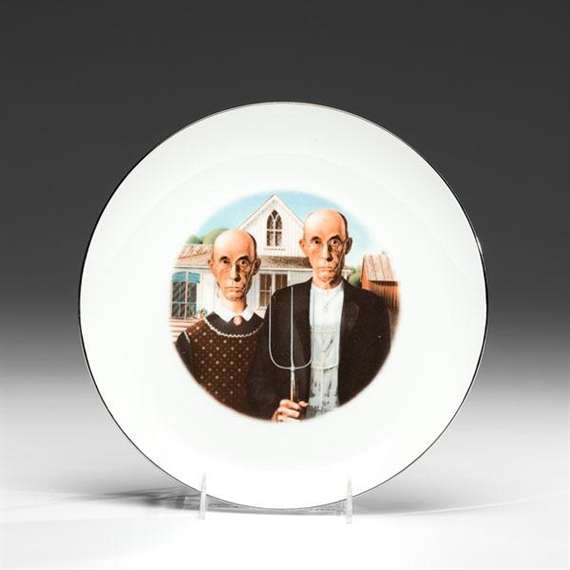
Look Alikes from the set of four dinner plates, American Gothic, porcelain with decal, 10.25 x 1.125 in., Gift of the Howard Kottler Testamentary Trust. 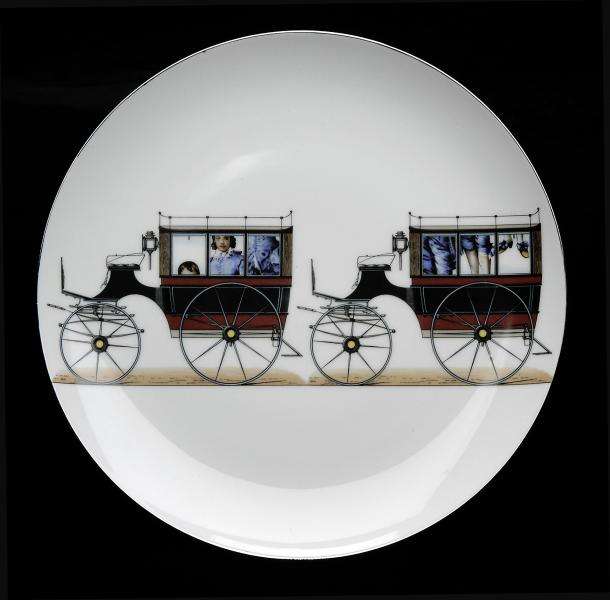
Ambitious Resident from the Blue Boy Set, 1969, porcelain, silver, and applied decals, Smithsonian American Art Museum, Gift of the Howard Kottler Testamentary Trust. 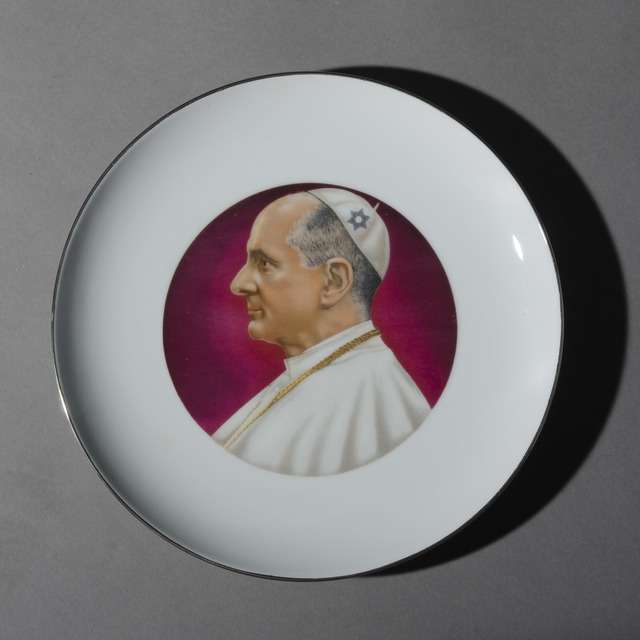
Bar Mitzvah Boy, porcelain, applied decals, 10.25 x 1.125 in., 1969. 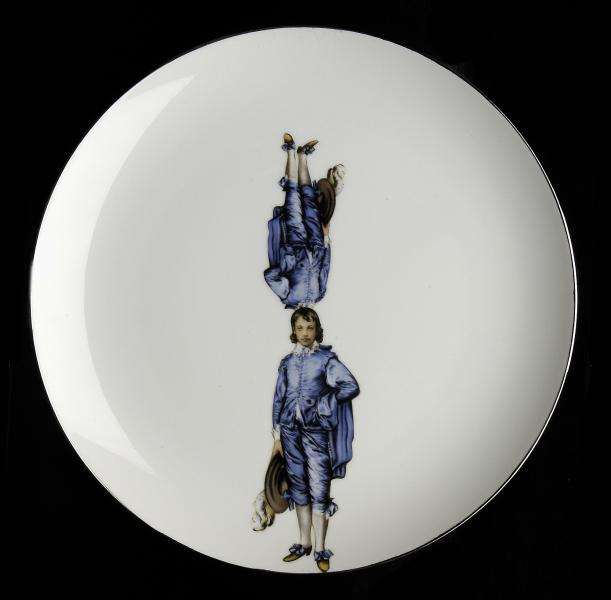
The Manhandler from the Blue Boy Set, 1969, porcelain, silver, and applied decals, Smithsonian American Art Museum, Gift of the Howard Kottler Testamentary Trust. 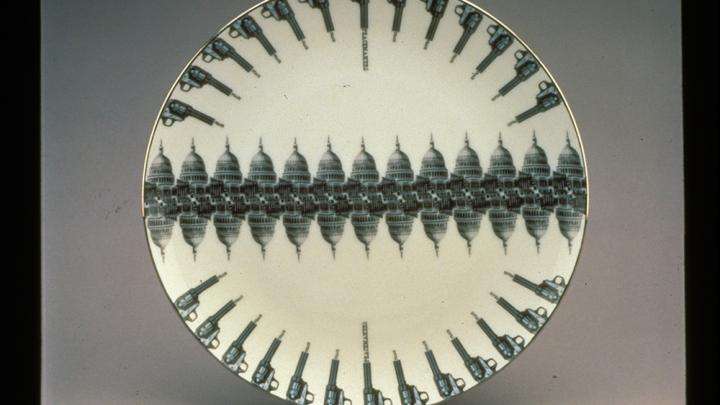
Peace March, porcelain plate with ceramic decal, 1970. 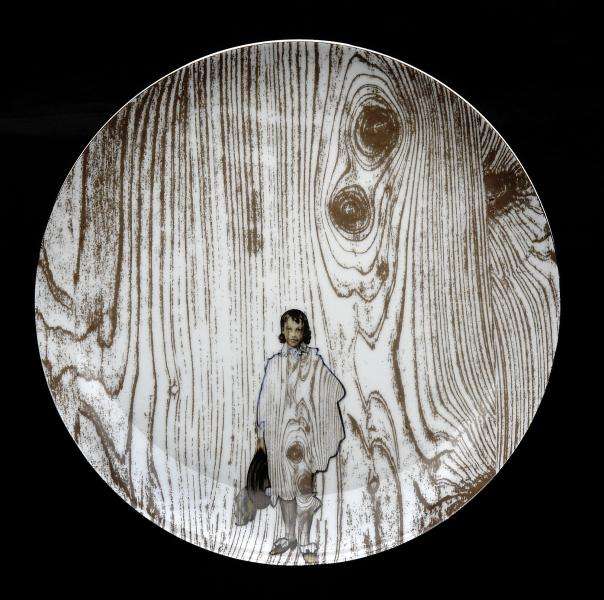
Would Blue Boy from the Blue Boy Set, 1969, porcelain, silver, and applied decals, Smithsonian American Art Museum, Gift of the Howard Kottler Testamentary Trust, 1991.
Alyson Brandes is a graduate of Chapman University and a 2020 Getty Marrow Undergraduate Intern at AMOCA. During her internship, Brandes writes periodically for AMOCA.org, and posts on Instagram and Facebook on Tuesdays. Read her blog posts:
- Asco and the Hierarchies of Art
- Feminizing Brutalism: Ruby Neri and Her Giant Vessels
- The Cinematic Roots of Clay
- The Colorful World of Miss Anna Valdez
- Split Vessels: Jenny Hata Blumenfield
- The Legend of Beatrice Wood
- Nicole Seisler: Rituals, Processes and Documentation
- Ashwini Bhat
- Nancy Selvin: The Abstraction of Art History
- New Acquisitions: Trompe l’Oeil
- Kim Tucker’s “Primal Beings, Ghosts, and Human Dummies”
- Blue Boys and Farmers: Howard Kottler’s Queer Plates
- At the Center of Nicki Green
- The Legacy of Sascha Brastoff
- End of Internship Reflection
